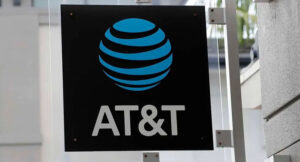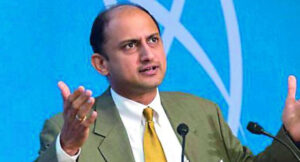Chief minister Yogi Adityanath on Saturday laid the foundation for the Microsoft India Development Centre in Sector-145, Noida. Calling it a landmark moment for the IT sector in Noida and North India, he said that Microsoft’s investment reinforces Uttar Pradesh’s position as a top investment destination.The chief minister also inaugurated the AI Engineering Centre of MAQ Software on Saturday.
Speaking on the occasion, he remarked: “I am told that Microsoft’s India Development Centre will be its largest research and development (R&D) hub outside its headquarters. With this new campus, Uttar Pradesh is set to become Microsoft’s next major base after Hyderabad.”
Extending his best wishes to Microsoft CEO and chairman Satya Nadella and his team, the chief minister praised the company’s strong presence in North India.He stated that Microsoft already has a presence in Uttar Pradesh, with ongoing programs in Noida and the new center, spread across 15 acres, will further establish Microsoft’s stronghold in both Uttar Pradesh and North India.
“Our government, under the guidance of Prime Minister Modi, has embraced the vision of a ‘New Uttar Pradesh for a New India’ over the past eight years,” Adityanath said. He highlighted that Noida IDC will not only strengthen India’s technical ecosystem through AI and cloud computing, but also help in effectively implementing PM Modi’s vision on the ground.“This center will serve as a hub for innovation in AI, cloud computing, and cybersecurity,” he added. He emphasised that Uttar Pradesh leads in electronic component production, contributing 55% nationwide.
“Noida and Greater Noida are rapidly emerging as hubs for electronic manufacturing,” he added.Expressing confidence in Microsoft’s Research & Development Center, he added, “This centre will not only emerge as a key innovation hub but will also help fulfill the dreams of youth in Uttar Pradesh and North India.”
The event was attended by Uttar Pradesh finance minister Suresh Khanna, industrial development minister Nand Gopal Gupta ‘Nandi’, IT and electronics minister Sunil Kumar Sharma and chief secretary Manoj Kumar Singh, along with Microsoft’s leadership team.As NTT and Yotta already have their data centres operational in Gautam Buddha Nagar district, the officials said that this district is on way to become the largest hub of the data centres in North India.
Yogi inaugurates Sify Data Centerin Gautam Buddh Nagar
Chief minister Yogi Adityanath inaugurated the Sify Data Center in Gautam Buddha Nagar’s Sector 132 on Saturday. Addressing the inauguration and launch ceremony, Adityanath mentioned that the state’s policies are being shaped in line with the demands of the modern era, the needs of the youth, and the evolving global landscape through research and development.
Inaugurating the data center, the chief minister also unveiled an image of Tirupati Balaji while listening to the hymns of Venkateshwara Swami. Adityanath commended Sify’s efforts in strengthening the state’s digital infrastructure.
Reaffirming Uttar Pradesh’s status as a leading investment destination, he noted that the state has achieved a major milestone in ease of doing business.
During his visit to the data centre, the chief minister toured various sections, reviewed operational processes, and assessed the facilities available to professionals working there. He also visited the command center and server room.
‘Gautam Buddha Nagar emerging as hub of health tourism’
Chief minister Yogi Adityanath on Saturday said Gautam Buddha Nagar is emerging fast as a hub of health tourism. During his daylong visit, he inaugurated the newly developed Sharda Care-Health City in Greater Noida, praising it as a unique blend of service and investment.
He appreciated the private sector’s contribution, noting that the government has taken several steps to encourage investment in the health sector.
He also highlighted Sharda University as an important centre for education and health and stated that health tourism is a significant sector—with Gautam Buddha Nagar emerging as a major hub—making the state a focal point for global attention.
The chief minister pointed out that while only six AIIMS were established in India over 70 years, their number surged to 22 in the last 10 years under Prime Minister Narendra Modi’s leadership.
In Uttar Pradesh, the number of medical colleges has surged from just 12 in 2017 to 40 new institutions in the past eight years, he said. Additionally, 37 private medical colleges have been established, including those in Maharajganj, Sambhal, and Shamli, along with three more through the public-private partnership model.
The chief minister described health tourism as a significant sector and asserted that India could emerge as a global leader in this field.
Uttar Pradesh industrial development minister Nand Gopal Gupta “Nandi”, Yogendra Upadhyay, Gautam Buddha Nagar MP Dr Mahesh Sharma, Surendra Nagar, MLA Dhirendra Singh, MLC Shrichand Sharma, chief secretary Manoj Kumar Singh, Sharda University Chancellor PK Gupta, Vice Chancellor YK Gupta, Prashant Gupta, Rishabh Gupta and others were present. Hindustan Times









